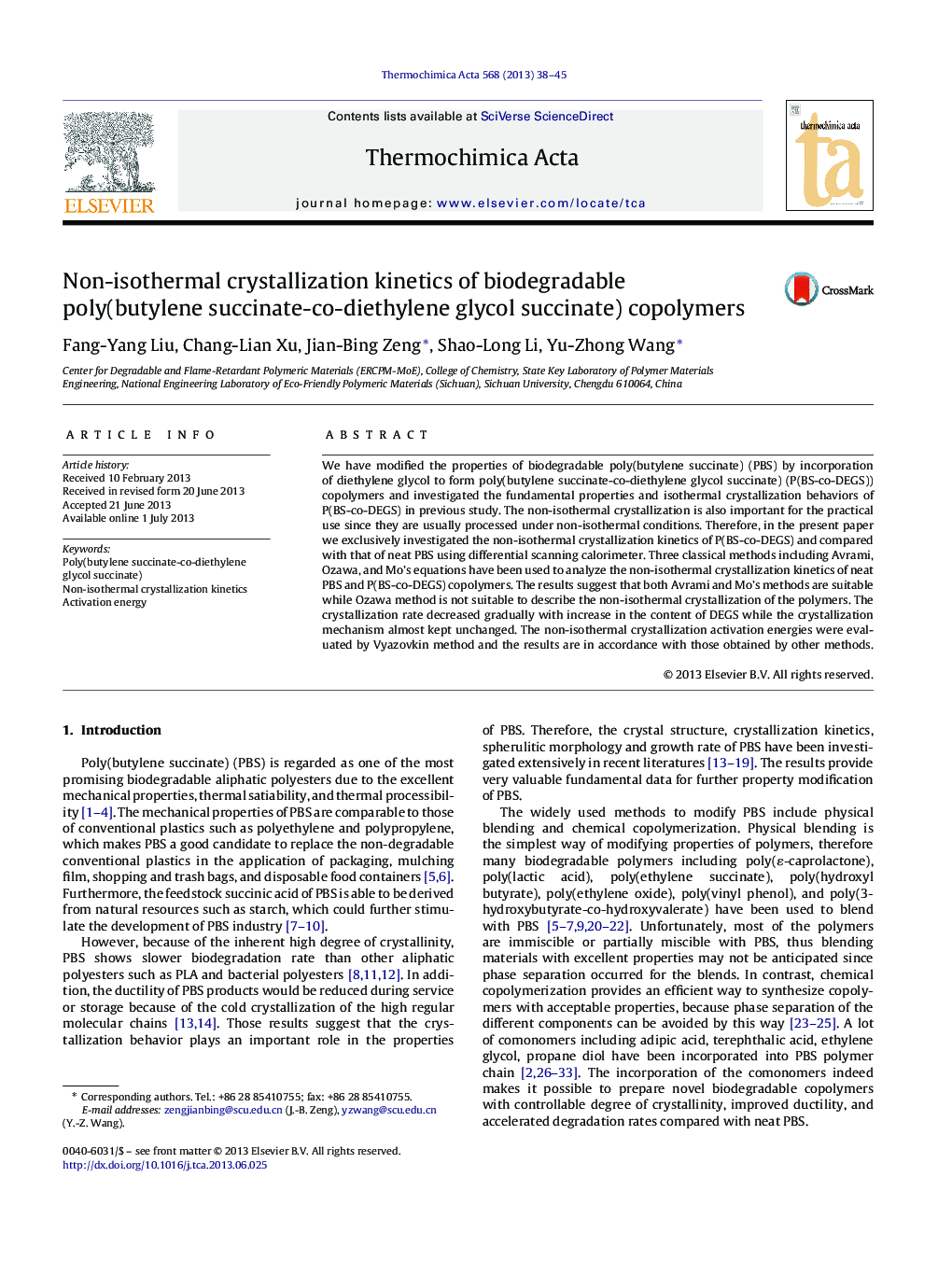| Article ID | Journal | Published Year | Pages | File Type |
|---|---|---|---|---|
| 673713 | Thermochimica Acta | 2013 | 8 Pages |
•The non-isothermal crystallization rate decreases with increase of DEGS content.•The crystallization mechanism almost kept unchanged with composition changed.•The crystallization activation energy shows similar variation to crystallization rate.
We have modified the properties of biodegradable poly(butylene succinate) (PBS) by incorporation of diethylene glycol to form poly(butylene succinate-co-diethylene glycol succinate) (P(BS-co-DEGS)) copolymers and investigated the fundamental properties and isothermal crystallization behaviors of P(BS-co-DEGS) in previous study. The non-isothermal crystallization is also important for the practical use since they are usually processed under non-isothermal conditions. Therefore, in the present paper we exclusively investigated the non-isothermal crystallization kinetics of P(BS-co-DEGS) and compared with that of neat PBS using differential scanning calorimeter. Three classical methods including Avrami, Ozawa, and Mo's equations have been used to analyze the non-isothermal crystallization kinetics of neat PBS and P(BS-co-DEGS) copolymers. The results suggest that both Avrami and Mo's methods are suitable while Ozawa method is not suitable to describe the non-isothermal crystallization of the polymers. The crystallization rate decreased gradually with increase in the content of DEGS while the crystallization mechanism almost kept unchanged. The non-isothermal crystallization activation energies were evaluated by Vyazovkin method and the results are in accordance with those obtained by other methods.
